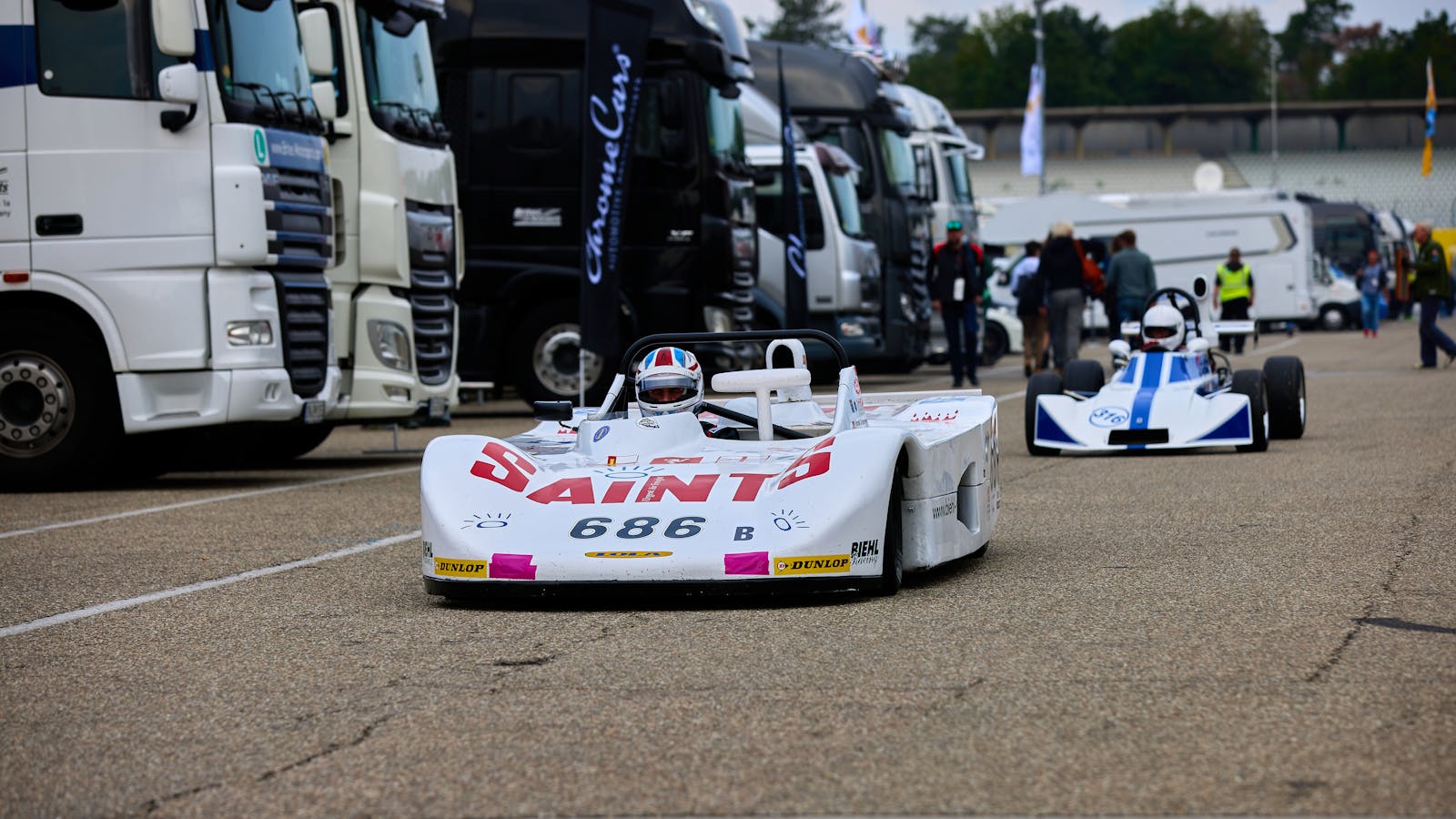Sebring International Raceway, located in Sebring, Florida, is one of the most storied and iconic racing venues in the world. Its origins date back to 1950 when it was established on the site of a former World War II B-17 bomber training base. The first race held at Sebring was the 12 Hours of Sebring, which quickly became a staple in the endurance racing calendar.
This event not only showcased the prowess of sports car manufacturers but also attracted a diverse array of drivers, from amateurs to seasoned professionals. The inaugural race was a significant milestone, marking the beginning of a legacy that would see Sebring evolve into a premier destination for motorsport enthusiasts. Over the decades, Sebring has undergone numerous transformations, both in terms of its physical layout and the types of events it hosts.
The track has been modified to enhance safety and accommodate modern racing standards while still retaining its challenging character. The 12-hour endurance race has become synonymous with the venue, drawing competitors from around the globe and serving as a critical round in the FIA World Endurance Championship. The rich history of Sebring is punctuated by memorable moments, legendary drivers, and groundbreaking automotive technology, making it a revered location in the annals of motorsport history.
Key Takeaways
- Sebring International Raceway has a rich history dating back to 1950, making it one of the oldest continuously operating race tracks in the United States.
- The Sebring Circuit presents technical challenges such as bumpy and uneven surfaces, making it a demanding track for both drivers and vehicles.
- Speed is of utmost importance at Sebring, with long straights and high-speed corners testing the limits of both man and machine.
- Strategies for maximizing speed at Sebring include optimizing car setup, managing tire wear, and making calculated decisions on when to push for maximum speed.
- Aerodynamics play a crucial role in unleashing speed at Sebring, with teams constantly seeking the perfect balance of downforce and drag to gain a competitive edge.
The Technical Challenges of the Sebring Circuit
Unique Technical Demands
The track’s bumpy surface, a remnant of its military past, presents a significant challenge for suspension tuning and vehicle handling. Unlike many modern racetracks that feature smooth asphalt, Sebring’s uneven terrain requires drivers to adapt their techniques to maintain control while navigating high-speed sections and tight corners.
Balancing Speed and Reliability
This unpredictability can lead to unexpected tire wear and mechanical failures, making it essential for teams to strike a balance between speed and reliability. Moreover, the layout of the Sebring circuit is a mix of long straights and technical turns, demanding a versatile approach from drivers.
Mastering the Circuit
The track features 17 turns over a distance of 3.74 miles, with some sections requiring precise braking and acceleration to maximize speed. The infamous “Hairpin” turn, for instance, is a critical point where drivers must decelerate sharply before accelerating out onto the straightaway. This combination of high-speed sections and technical corners means that drivers must possess not only raw speed but also exceptional skill in car control and racecraft to navigate the circuit effectively.
The Importance of Speed at Sebring

Speed is paramount at Sebring, where every fraction of a second can determine the outcome of a race. The long straights provide ample opportunities for overtaking, but they also require drivers to be strategic about their approach. Achieving high speeds on these stretches is essential for gaining an advantage over competitors, particularly during the 12-hour endurance race where maintaining pace over extended periods is crucial.
Teams invest significant resources into optimizing their vehicles for speed, focusing on engine performance, weight reduction, and aerodynamic efficiency. However, speed at Sebring is not solely about raw power; it also involves understanding the nuances of tire performance and fuel management. As drivers push their cars to the limit, they must also be mindful of how their driving style affects tire degradation and fuel consumption.
A well-executed strategy that balances speed with these factors can lead to a competitive edge, allowing teams to maintain their position or even gain ground on rivals during critical moments of the race.
Strategies for Maximizing Speed on the Sebring Circuit
| Strategy | Impact |
|---|---|
| Aerodynamics Optimization | Reduction in drag and improved downforce for higher speeds |
| Suspension Tuning | Enhanced handling and stability through corners |
| Engine Performance Tuning | Increased power output for faster acceleration on straights |
| Tire Selection and Pressure | Improved grip and traction for better cornering and acceleration |
| Braking Technique | Optimized braking points and smooth deceleration for faster lap times |
To maximize speed on the Sebring circuit, teams employ a variety of strategies that encompass vehicle setup, driver technique, and race strategy. One key aspect is optimizing the car’s suspension settings to handle the bumpy surface effectively while maintaining grip during high-speed sections. Engineers often experiment with different spring rates and damping settings to find the ideal balance that allows for both comfort over bumps and stability during cornering.
In addition to mechanical adjustments, drivers must also refine their racing lines to extract maximum speed from each corner. This involves studying telemetry data to identify optimal braking points and acceleration zones. Many successful drivers at Sebring have developed a keen sense of how to carry speed through corners while minimizing time lost during transitions between straightaways and turns.
Furthermore, effective communication between drivers and pit crews is vital; real-time feedback can lead to adjustments in strategy that enhance overall performance throughout the race.
The Role of Aerodynamics in Unleashing Speed at Sebring
Aerodynamics plays a crucial role in achieving high speeds at Sebring, where downforce and drag are constant considerations for teams. The design of a race car’s bodywork significantly impacts its performance on the track; engineers meticulously craft aerodynamic elements such as wings, diffusers, and side skirts to optimize airflow around the vehicle. A well-designed aerodynamic package can enhance grip during cornering while minimizing drag on straights, allowing cars to achieve higher speeds without sacrificing stability.
At Sebring, where long straights are interspersed with technical corners, finding the right aerodynamic balance is essential. Teams often conduct wind tunnel testing and computational fluid dynamics simulations to refine their designs before arriving at the track. Adjustments made to wing angles or ride height can have profound effects on lap times; even minor tweaks can lead to significant improvements in performance.
As such, aerodynamics is not merely an engineering consideration but a critical component of race strategy that can influence outcomes in real-time.
The Impact of Tire Management on Performance at Sebring
Tire management is another vital aspect of racing at Sebring that directly affects performance and speed. The unique surface conditions combined with the demands of endurance racing mean that teams must carefully monitor tire wear throughout the event. Drivers must strike a delicate balance between pushing their tires to extract maximum performance and preserving them for later stages of the race when fatigue sets in.
Different tire compounds offer varying levels of grip and durability; teams often choose their tires based on anticipated track conditions and race strategy. For instance, softer compounds may provide better grip but wear out more quickly, while harder compounds may last longer but sacrifice some performance. Understanding when to switch tires or adjust driving styles based on tire condition can be pivotal in maintaining competitive lap times over the course of 12 hours.
Successful teams often employ data analytics to predict tire performance trends, allowing them to make informed decisions that enhance their chances of success.
The Mental and Physical Demands of Racing at Sebring
Racing at Sebring is not only a test of technical skill but also one of mental fortitude and physical endurance. Drivers face grueling conditions as they navigate the circuit for hours on end, requiring peak physical fitness to maintain focus and reaction times. The combination of heat, fatigue, and intense concentration can take a toll on even the most seasoned competitors.
Many drivers engage in rigorous training regimens that include cardiovascular conditioning, strength training, and mental preparation techniques to ensure they are ready for the challenges ahead. Mental resilience is equally important; drivers must remain calm under pressure while making split-second decisions that can impact their race outcome. The ability to stay focused amidst distractions—such as other competitors or changing weather conditions—is crucial for success at Sebring.
Additionally, effective communication with team members during pit stops or strategy discussions can help alleviate stress and ensure that everyone remains aligned toward achieving their goals throughout the race.
Notable Moments of Speed and Excitement at Sebring
Throughout its history, Sebring International Raceway has witnessed countless moments of speed and excitement that have become etched in motorsport lore. One such moment occurred during the 1966 12 Hours of Sebring when Ford’s GT40s dominated the field against Ferrari’s formidable lineup. This race marked a turning point in endurance racing history as Ford’s engineering prowess was showcased against one of Italy’s most storied manufacturers.
Another unforgettable moment came in 1970 when Steve McQueen’s film “Le Mans” was shot at Sebring during the 12-hour race weekend. The film captured not only the thrill of racing but also highlighted the camaraderie among drivers and teams as they battled for supremacy on this challenging circuit. More recently, in 2019, an intense battle between two leading teams culminated in a nail-biting finish that saw just seconds separating them after hours of racing—a testament to the competitive spirit that defines Sebring.
These moments are just a few examples of how Sebring has become synonymous with speed and excitement in motorsport history. Each year, as teams return to this legendary circuit, they bring with them new stories of triumphs and challenges that continue to shape its legacy as one of the premier racing venues in the world.








Leave a Reply